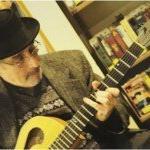“Immorality: the morality of those who are having a better time.” — H. L. Mencken
In 1900, editorializing on jazz and “other black music,” Etude magazine ran a piece entitled “Musical Impurity,” reading, “The counters of music stores are loaded with this virulent poison which in the form of a malarious epidemic is finding its way into the homes and brains of our youth.”
Also around 1900, every state in the union had committed to compulsory, thrice-weekly “Scientific Temperance Instruction” in their public schools. But as Daniel Okrent has written in his Last Call, “Students were force-fed a stew of mythology (‘the majority of beer drinkers die of dropsy’), remonstration (‘persons should not take a stimulant before bathing’), and terror (‘when alcohol passes down the throat it burns off the skin, leaving it bare and burning.’)”
On the “malarious epidemic,” the New Orleans bassist Pops Foster had this to say: “If the rest of the world was like musicians, this would be a great world. You should see musicians back stage when one band comes back to see another. Jesus, there’s some noise and talk.”
And on “temperance,” Frank Sinatra—the “Sultan of Swoon”—opined, “I feel sorry for people that don’t drink, because when they wake up in the morning, that is the best they are going to feel all day…”
So what’s the problem? What is the basis of this opposition to letting go and enjoying life, especially since easy living brings community—the blood-flow of jazz rhythm?
In his American Fun: Four Centuries of Joyous Revolt, John Beckman asks the same question: “How has such a tumultuous public, historically riven by deep social differences (class division, racial prejudice, partisan politics, culture wars) ever gathered in peaceable activity, let alone done it time and again. The answer is by having fun—often outrageous, even life-threatening fun…. The fun of pranks, lewd dances, wild parties, and tough competitions…unites the crowd in common joy.”
Yet in 1919—as the cut-loose Jazz Age Lindy-hopped through our doors,—a big chunk of the country voted to oppose the common joy, associating good-time drinking with low-life living. What internal turning-back would have make them doubt their own thirst for life? What constrained their freedom? What would have made them vote to limit other people’s joy?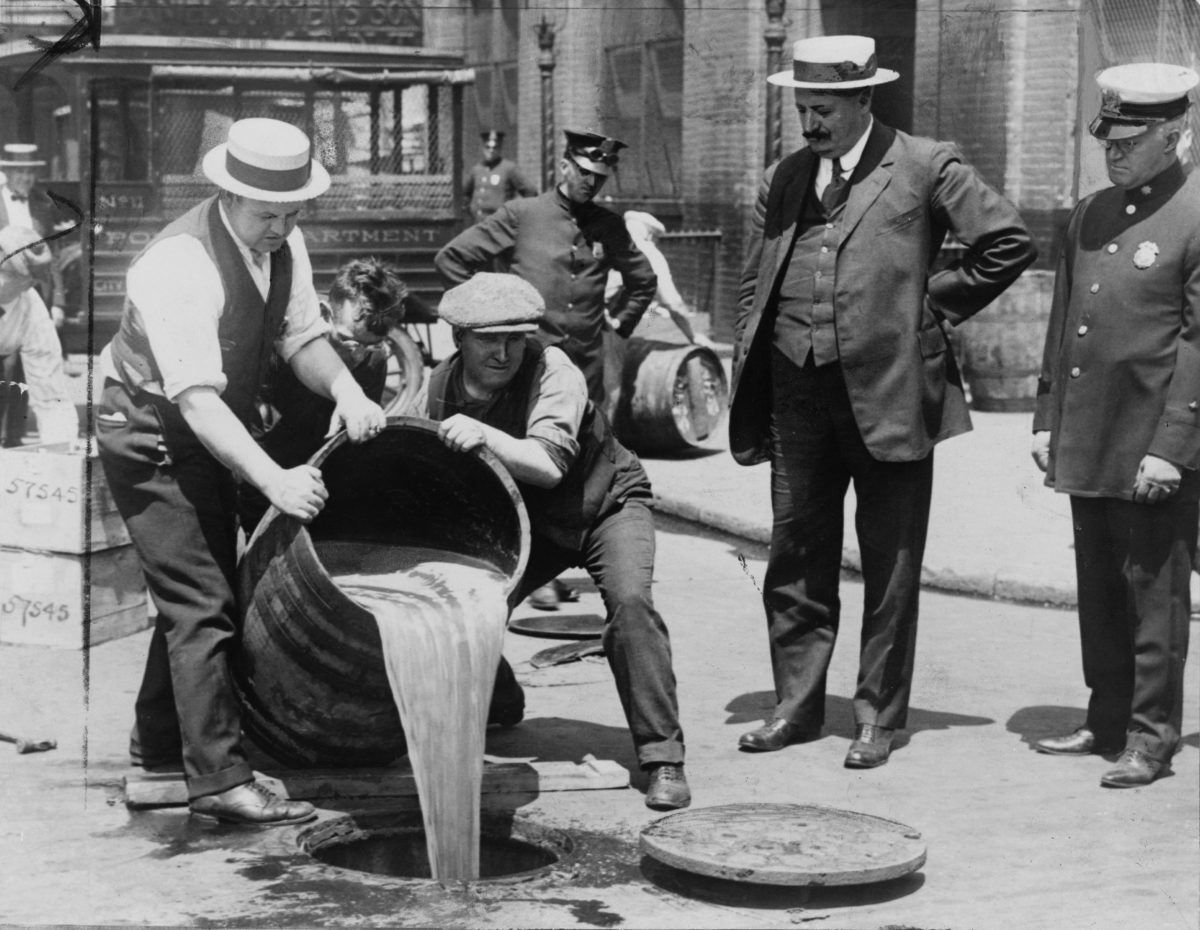
In Wichita, Kansas, 1901, Carrie Nation had proclaimed “Men of Wichita, this is the right arm of God and I am destined to wreck every saloon in your city!” She then “set to work on two ‘murder shops’ with rocks, iron rods, and hatchets, only stopping when the owner of the second saloon put a revolver to her head.”
Eighteen years later, James Reese Europe’s 369th “Hellfighters” Regiment, which had received the French Croix de Guerre for bravery in action in WWI, marched down Fifth Avenue in a tremendous victory parade against the wintry cold—playing the new music the press called “jazz.”

“Jim Europe’s band of sixty brass and reed, thirty trumpet and drum, swung into ‘Here Comes My Daddy Now’; all of Harlem went wild for a moment—a day or two, or a week—Harlem, and all of New York, thought these black men were heroes,” wrote the late African-American scholar Nathan Irvin Huggins.
But the year before, the U.S. Army had issued among the French people its “Secret Information Concerning Black Troops,” warning against black and white commingling, “lest Negroes rape French women,” Huggins has written. And while the Regiment was awaiting their return to the United States, they were “brutally harassed by American military police,” Huggins reports.
Jazz is the music, not of repression or “immorality,” but of freedom—our American watchword. In fact, the music itself may be the freedom. “The true spirit of jazz is a joyous revolt from convention, custom, authority, boredom, even sorrow—from everything that would confine the soul of man and hinder its riding free on air,” Joel Augustus Rogers wrote in 1925. He added, “Jazz with its mocking disregard for formality is a leveler and makes for democracy.”
Yet democracy relies on self-rule—as a society, and as individuals. We depend on taking responsibility, not on waiting for a king or a political party to do it for us. We depend on using our clear minds to find our own answers. Out of this attentiveness comes personal freedom. (Or as the author William Least Heat-Moon wrote after observing boys with kites, “No strings, no flight.”) In this responsibility, we make a statement. Thus the oft-heard comment about a jazz solo: “He’s really saying something.”
The historian Thaddeus Russell has written, “To solve the lack of order they saw all around them, the (founding) fathers seized on one of the great—and often missed—ironies in world history: the only thing that could make men forsake their own freedom and still believe they were free was self-rule.” Early jazz music had no rule books; much of it came from the freewheeling sanctified churches where, as Zora Neale Hurston has written “The jagged harmony is what makes it…The harmony of the true spiritual is not regular. The dissonances are important and not to be ironed out by the trained musician.”
So if jazz breaks from formality (“the rigid observance of convention”), what rule does it follow? Where, in fact, are the rules? To find the moment of swing, do we need a formula? And if jazz has no standard form, how do we recognize it? What template did musicians use to develop their skills” They were blowing stuff not on the sheet—stars blinking in and out. They were talking without words.
Ironically, it is no secret that early American music evolved from the historic forms of European harmony and Afro/Caribbean rhythms. Throughout the 1800s, village bands by the thousands paraded through streets playing European marches, reels, and hymns. Later, ragtime (ragged time), coming from the plantation banjo, brought strains—symphonic movements on American soil. And it brought regular syncopation, for which there was little counterpart. In New Orleans Blues, Jelly Roll Morton gave us the “Spanish Tinge.” Then when John Stark published the Red Back Book, piano ragtime turned into band ragtime, which brought the jazz band. To the general populace, the European stuff was not new; the African rhythms were. Today, the whole nation dances to them.
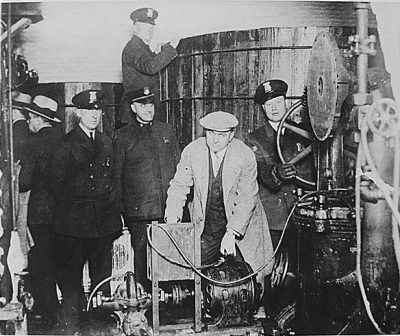
But back then, the offbeat rhythms were thought to be crude, lascivious, and dangerous. “Scientific data” showed that ragtime would “stagnate the brain cells and wreck the nervous system.” In 1919, the announcement of the first jazz band to play in Columbia (SC)…, inspired feelings of terror among the local Baptists such as what might have been aroused by a personal appearance of Yahweh. Until that time jazz had never been heard in the Palmetto State except as a verb meaning to copulate.”
And then there was racism. In his A Right to Sing the Blues, Jeffrey Melnick has noted that the primary cause of the hysteria around the rise of jazz…”was its identification with the brothel, usually the Negro brothel.” Melnick reports on “One letter writer worried about America ‘falling prey to the collective soul of the negro’ through ragtime, a fate that held particular danger because among African Americans ‘sexual restraint is almost unknown and the widest latitude of moral uncertainty is conceded.” The factual basis for such views was minimal; most white Americans avoided red-light districts and liminal spaces where jazz emerged.
Jazz became linked with the underworld—particularly with the brothel. It did not matter that, in his journal, the plantation-born Kid Ory had written about the District, “I want to thank New Orleans and Storyville for opening my eyes to how the rest of the world lived and how people enjoyed themselves in that tough life. It looked as though the people were much happier down there, doing the things they did; which we would call wrong; more so than the people of today having a good time and living a clean life. They were much happier in New Orleans then.”
Yet as Neil Leonard has reported, “Clearly beyond the pale was popular music, which flourished weed-like in minstrel and vaudeville theaters, lower-class cabarets, saloons, dance halls, and other ‘unsavory’ places. For orthodox purists the sounds in such venues did not even qualify as ‘music.’” But as Ted Gioia has recently pointed out, “Innovative songs almost always come from outsiders—the poor, the unruly and the marginalized.”
Jazz was about emancipation—a breaking from orthodoxy. Bruce Boyd Raeburn has written, “The rhythm brought people together, set them free to find their voices, and brought them ‘a chance to behave in a manner that contradicted the dominant canonical presumptions regarding social hierarchy, as well as those applying to music, and to construct identities accordingly.’” Jazz people used gumption to overcome presumption. They made their own self-rule.
But the “self-rule” of racism blocked their way. Gary Krist has added, “Perhaps most perniciously, (the new black music) promoted contact—much of it of the most scandalous type—across the color line, and in a context of social equality that was simply intolerable to most Southern whites.”
And from Nathan Huggins: “Racism, unlike child labor and unrestrained exploitation of natural resources, could not be touched by simple reforms and efforts at right thinking. Rather it was so deep in the American psyche (black and white) as not to be consciously understood.” Even though black music had, for years, touched the hearts and souls of whites, including slaveholders, the breakout of jazz music appears to have threatened the social order.
What about alcohol? From the early days of the Republic, the “good creature of God,” as booze was then often termed, had spilled over the countryside so that according to Ken Burns, “the average American over 15 years of age drank the equivalent of 88 bottles of whiskey every year—three times as much as their 21st century descendants.” The historian Herbert Asbury adds, “Babies were quieted by copious doses of a mixture of rum and opium, and so spent their infancy in a happy fog; and able-bodied men, and women too…,seldom went more than a few hours without a drink. They occasional abstainer was considered a crackpot and generally shunned.” Alcoholism seems to have come with hard-times early America. Those afflicted had misplaced their personal self-rule.
And by the 1830s, Asbury adds, “spiritous liquor was being condemned as an invention of the devil and the cause of virtually every known disease.”
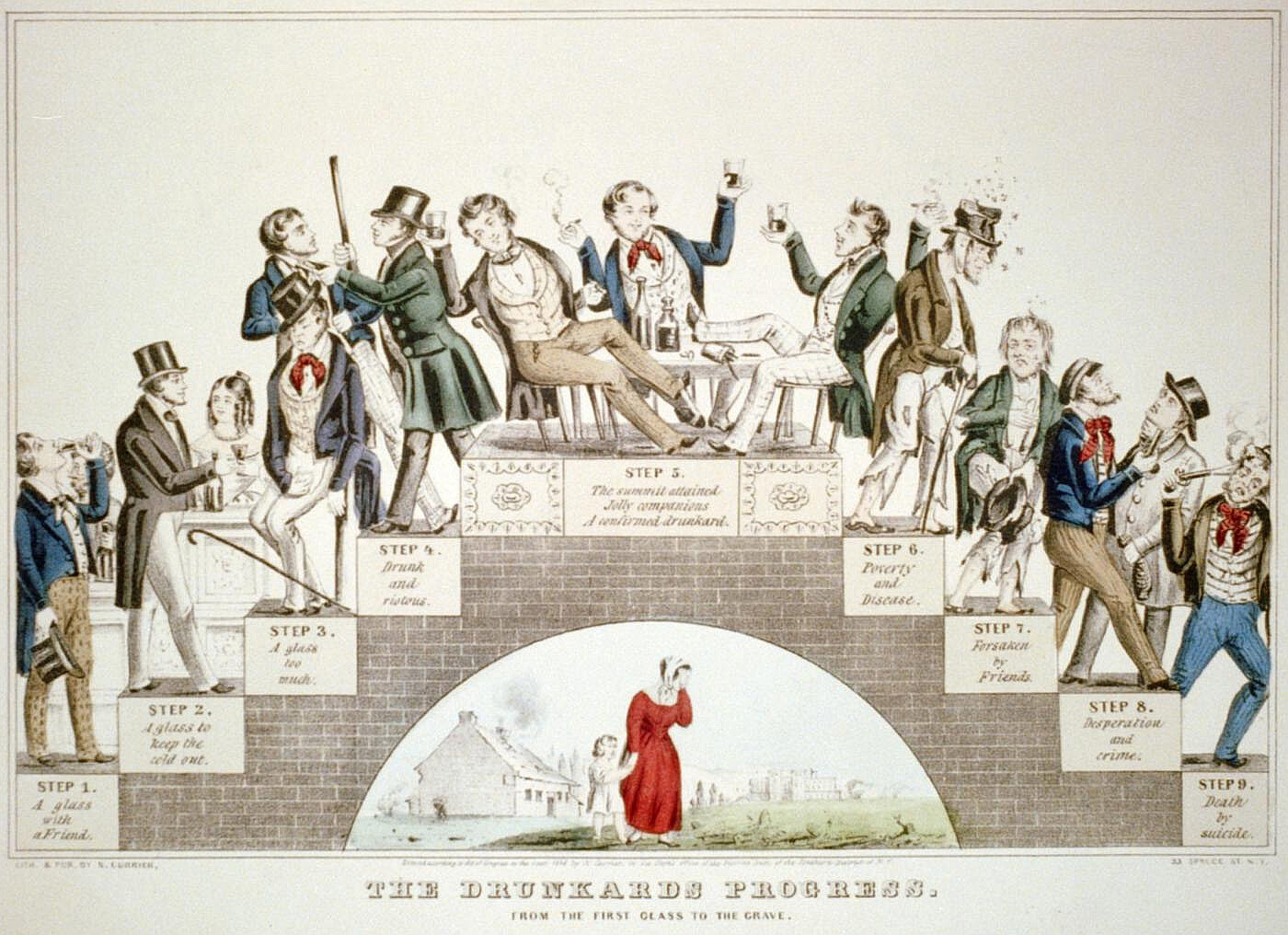
The Prohibition movement had an early saint in the eminent Dr. Benjamin Rush, signer of the Declaration of Independence, who in 1790 published An Inquiry into the Effects of Spirituous Liquors on the Human Body and the Mind. “Spiritous liquors destroy more lives than the sword,” Rush wrote. “War has its intervals of destruction—but spirits operate at all times and seasons upon human life.” His colleague Dr. Thomas Sewell described these associated conditions: “dyspepsia, jaundice, emaciation, corpulence, rheumatism, gout, palpitation, epilepsy, lethargy, palsy, apoplexy, melancholy, madness, delirium tremens, and premature old age”
An element of moral repression entered the equation, with some people “knowing better” than others what was good for them. Dr. Rush elaborated on the “distressing and terrible” effects upon the “moral faculty,” making men “peevish and quarrelsome” and causing them to “violate promises and engagements without shame or remorse. He added, “A people corrupted by strong drink cannot long be a free people.”
Then in 1826 came the founding of the American Temperance Society, which turned the temperance movement into an evangelical crusade. The society’s speakers, notably Justin Edwards and Lyman Beecher, traveled the country, “crying over and over again that they were engaged upon a divine mission and acting under the awful authority of God, an assertion which was accepted everywhere as inspired truth,” Asbury recounts. “Renunciation of liquor and acceptance of Jesus became almost one and the same thing.”
Ten years later, Asbury recounts, the Temperance Manual for Young Men of the United States pronounced that intoxicating beverage “binds the soul in hopeless bondage to its destroyer, awakens the ‘worm that dieth not, and the fire which is not quenched,’ and drives the soul away in despair, weeping and wailing, to be punished with everlasting destruction from the presence of the Lord and glory of his power.”
Binding, “God-inspired” directives such as these become non-negotiable. Once a person becomes “turned,” there is no turning back. There becomes only one way to live; self-rule goes on the back burner. Yet as Pete Hamill has said about Prohibition, “It’s one of those things where the average American says, ‘Who the hell are you to tell me how to live?’ If we become a country in which we all say, ‘Please, tell me how to live,’ we’re doomed.”
The Prohibition movement owed plenty to crusading women like Frances Willard and Susan B. Anthony, who had protested with big voices against the taverns their men would visit after work, become besotted, then arrive home useless, unable to love or even to move. Over the course of a century, these women would finally grant themselves the right to vote (19th Amendment)—the same year Prohibition went live.
Ironically, this early victory for women’s liberation turned some women into “flappers,” who celebrated their new-found power with booze liberated by Al Capone’s Chicago “Outfit” and music, provided by the Great Black Migration, that filled our cities with new, cut-loose, sexy dances.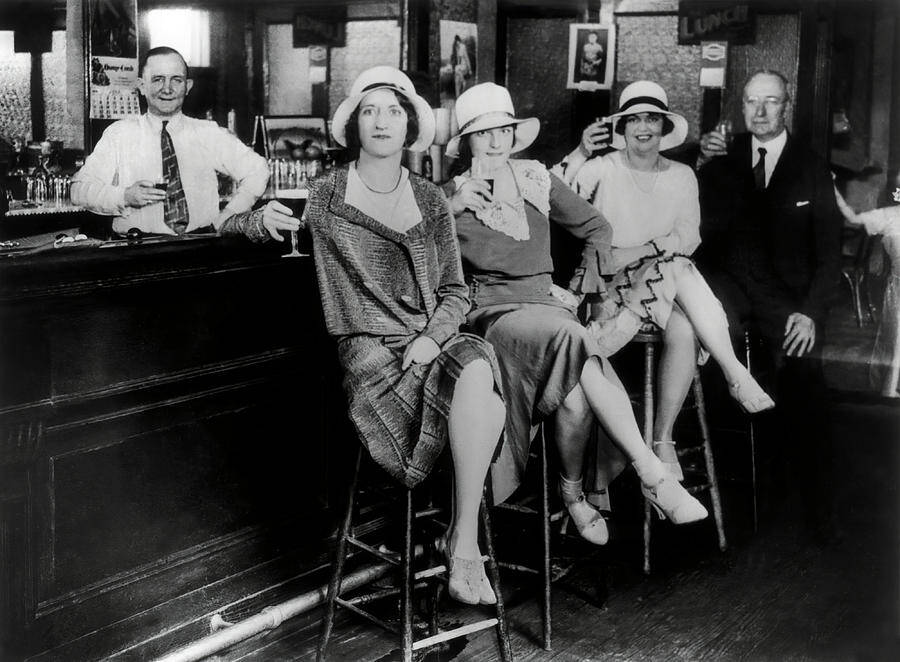
Some of the old guard didn’t like it. In their Bourbon Street Black, Jack Buerkle and Danny Barker cite Arts in Society: “A report of the Illinois Vigilance Association directed by Reverend Phillip Yarrow, found that in 1921-1922 jazz had ‘caused the downfall’ of one thousand girls in Chicago alone. Dr. Florence Richards, medical director of a Philadelphia high school for girls, warned that jazz ‘may tear to pieces our whole social fabric.’”
On April 2, 1917 the United Stated declared war on Germany, and Prohibition became patriotic. In the elections of 1916, it had been the big issue in almost all states, and the “Drys” won. Then, people were moved to see the war effort as demanding serious minds and hands. “Sober soldiers and factory hands are better soldiers and factory hands,” read the placards.
When war was declared, according to Ken Burns’ Prohibition, “A wave of hysteria followed against German Americans. Children destroyed German textbooks….The war was a disaster for German American brewers. Pabst, Schlitz, and Miller were thought to be treasonous.” In the elections of 1916, Prohibition had been the principal issue in nearly every state poll, and the prohibitionists won.”
“The war…necessitated the saving of food and thus commended prohibition to the patriotic as a grain–saving measure, wrote Frederick Lewis Allen in Only Yesterday. “It turned public opinion against everything German—and many of the big brewers and distillers were of German origin.” Iowa banned speaking German in public, and Boston outlawed the playing of Beethoven. Allen continues, “With the convening of the state legislatures in January 1919, the movement for (Prohibition) ratification went ahead with amazing speed. The New York Tribune said that it was ‘as if a sailing-ship on a windless ocean were sweeping ahead, propelled by some invisible force.’”
That force may have been named Wayne Wheeler, who starting in 1903 took the gavel as principal power broker of the Anti-Saloon League. Daniel Okrent has written, “By 1903, the year Wheeler became the ASL’s Ohio superintendent, the league had targeted seventy sitting legislators of both parties (nearly half the legislative membership) and had defeated everyone one of them.” He was, Okrent has noted, “recognized by friend and foe alike as the most masterful and powerful single individual in the United States.”
Wielding an unflappable religious zeal, Wheeler stated, “Never again will any political party ignore the protests of the church and the moral forces of the state.”
Of course, our current political turmoil reveals that the state has redefined the word “moral.” It did then, too, in reference to black music. In JSTOR Daily, Gabrielle Bellot has noted that Conservative writers “warning against the ‘Satanic’ quality of jazz… were also drawing on a long history of associating black people with evil—‘darkness’—by virtue of one’s swarthy skin, a racist tradition extending well into the early days of European colonialism.”
The author and broadcast journalist Eric Burns has written that the ASL, led by Wheeler, “turned the ASL into one of America’s first all-powerful, government-bending, will-of-the-people-altering band of lobbyists—more powerful than the NRA, already in existence….A strong case can made for viewing the ASL as the death knell for majority rule in the U.S., the end of the sovereignty of the people and the transfer of political power to passionately committed special interest groups.”
These groups would include radical Prohibitionists, immigration opponents, and a newly formed Ku Klux Klan. “The Klan’s anti-liquor sentiment was rooted in its hatred of the immigrant masses in liquor-soaked cities,” Okrent has written. Like Wheeler, the KKK saw jazz as an evil that brought races together.
The 18th Amendment undercut self-rule—as well as majority rule. It implied that we are incapable of controlling our physical and emotional impulses, that we need the government to do it for us. In a country founded on liberty, the new law flew the flag of morality. Rather than asserting “live and let live,” it proclaimed, “This is how you should live.” As the journalist Pete Hamill has said, “Every part of the constitution is about expanding human freedom, except prohibition.” (Ken Burns)
Meanwhile, WWI had upturned American demography. Turn-of-century immigration had been massive, and the Dry supporters had stood up to what they felt was a “foreign invasion of undeveloped races,” according to the New York Times. “The boisterous drinking culture of the ubiquitous working-class saloon, dominated by immigrant men, seemed to make manifest the dangers mass immigration posed to a white native Protestant American way of life.”
Then the draft turned the tables: it took workingmen from their jobs and sent them overseas. At the same time, the war slowed immigration to 10 percent of its former volume. Suddenly, Northern industry needed more workers, so it began recruiting Southern black tenant farmers and sharecroppers. “They left as though they were fleeing some curse,” wrote the scholar Emmet J. Scott. “They were willing to make almost any sacrifice to obtain a railroad ticket, and they left with the intention of staying.’”
Between 1910-1920, Chicago’s black population grew by around 65,000 folks. With them came the big new voices of jazz and the blues. On the South Side, they found a new home. But the times they were a-changing.
Peter Gerler has written about jazz since the early 1990s. He has been published in American Legacy, DownBeat, JazzTimes, Humanities, The Boston Globe, New Orleans Gambit, Moultrie Observer, WBGO, Upbeat, www.jazz.com, www.nejazz.com, and other venues. He has presented on early jazz at Satchmo Summerfest, River Road African American Museum, Classic Jazz at Lincoln Library, Cambridge Center for Adult Education, Newton Lifetime Learning, and numerous senior facilities in the Boston area. Visit him online at www.jazztalks.com.





